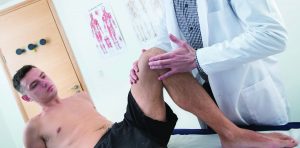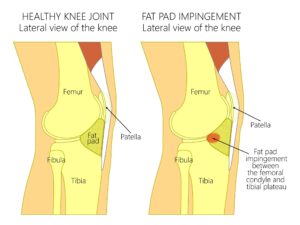Runner’s Knee (Patellofemoral Pain Syndrome)
Knee pain is a common issue. As the running seasons is firmly upon us, many competitors are increasing training time as the marathons and park runs draw closer. One potential downside of all this training could be the onset of Patellofemoral Pain Syndrome (Runner’s Knee). Runner’s knee mainly affects young female runners. This is due to a the wider female pelvis causing biomechanical discrepancies when running.
What is happening in Runner’s knee?
 Runner’s knee is a phrase for 2 issues, so please don’t confuse this with the ITB Syndrome. What is happening to the affected knee is a recoil action from the patella (kneecap). This irritates the subchondral bone behind the kneecap due to it tracking away when straightening the leg. This is the reason why your knee is popping when performing this action.
Runner’s knee is a phrase for 2 issues, so please don’t confuse this with the ITB Syndrome. What is happening to the affected knee is a recoil action from the patella (kneecap). This irritates the subchondral bone behind the kneecap due to it tracking away when straightening the leg. This is the reason why your knee is popping when performing this action.
There are various reasons for this phenomena, the primary reason is being the wider pelvis, as mentioned above. Other causes include having a dropped foot arch (more specifically the bone on the inside of your foot, called the navicular). To demonstrate how this could affect your knee, try standing up and rolling the inside of your foot to the floor. As you do this, you should find the lower leg bone also rotates inwards and you may feel minor stress around the knee.
Weakness around the pelvic area has an association with runner’s knee. The pelvis helps stabilise the knee when performing certain movements, such as running. If you’ve ever made a difficult movement, such as a one-legged squat, it will really expose the muscles that support the hip and could result in the knee becoming unstable. This is one of the tests I use in clinical practise to determine pelvic stability.
How do you know you have it?
Symptoms associated with runner’s knee is include running pain and discomfort when walking down stairs. Despite this, that the knees can withstand up to 3.5 times the bodyweight. A significant aspect of runner’s knee is that the pain is not felt during cycling, because there is less recoil when the foot doesn’t hit the ground.
Stressed?
There is research to suggest anxiety, stress and pain catastrophising can result in a heightened sensitivity to the sensation of pain, and runner’s knee is no different. What has a slightly more obvious correlation is what is known as ‘fear avoidance’. Fear avoidance is the belief that carrying out a movement will hurt, or cause further damage to the area, so the patient moves in a less natural way, which can cause other problems. This is very common in runner’s knee.
How do we fix it?
 Runner’s knee is very treatable. Depending on its’ severity and the length of time it has been present, you could be looking at 4-6 treatments, which includes a personalised 4-week exercise programme, if you’d like to decrease the possibility of the problem recurring.
Runner’s knee is very treatable. Depending on its’ severity and the length of time it has been present, you could be looking at 4-6 treatments, which includes a personalised 4-week exercise programme, if you’d like to decrease the possibility of the problem recurring.
Treatment starts by reviewing the kneecap tracking, and starting to balance out the muscles around the knee and pelvis. Foot biomechanics are important to assess and also change. This is achieved by employing osteopathic techniques and manipulation. Another key element is teaching the patient how to squat, again by employing a correct muscle firing pattern (this sounds simple but can be more difficult than you think!).
Specially placed K tape is essential to prevent the patient’s knee from tracking the way it shouldn’t. This can only be kept on for 3-5 days, so it certainly isn’t a quick fix!
Questions regarding runner’s knee?
Concerns? Issues?
Contact us: 0161 209 3980
info@movementandwellbeingclinic.co.uk
Ed Madeley M.Ost
